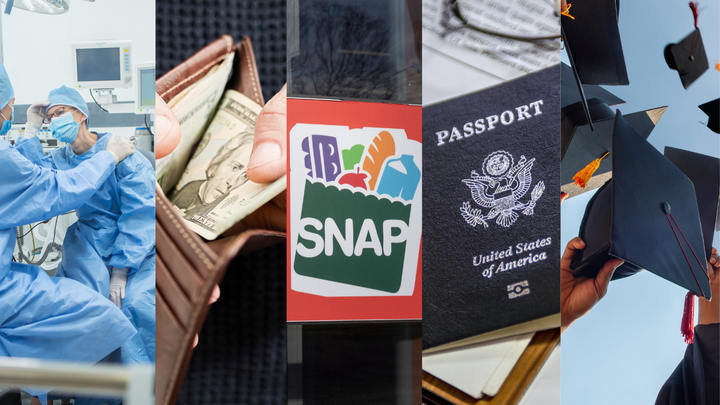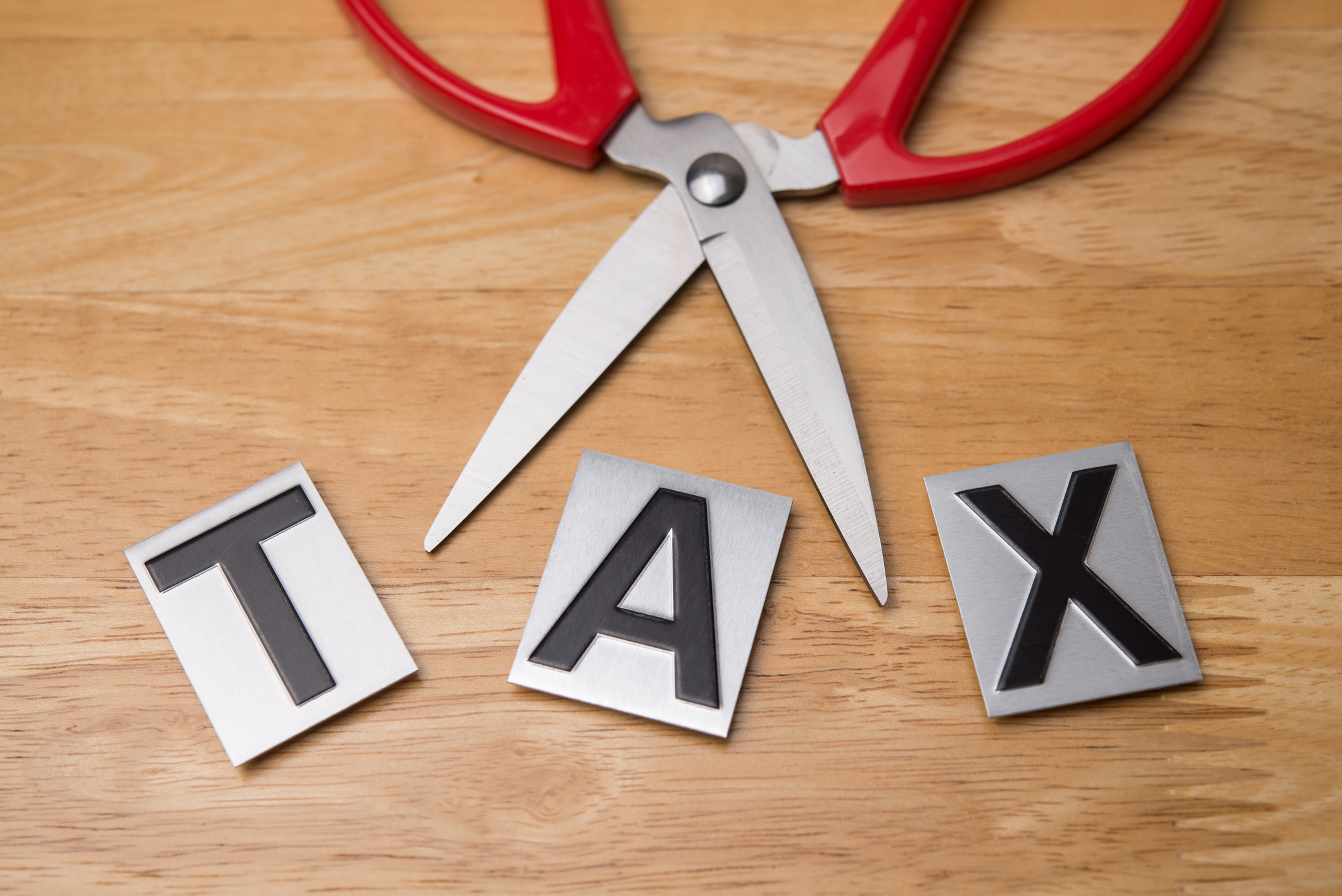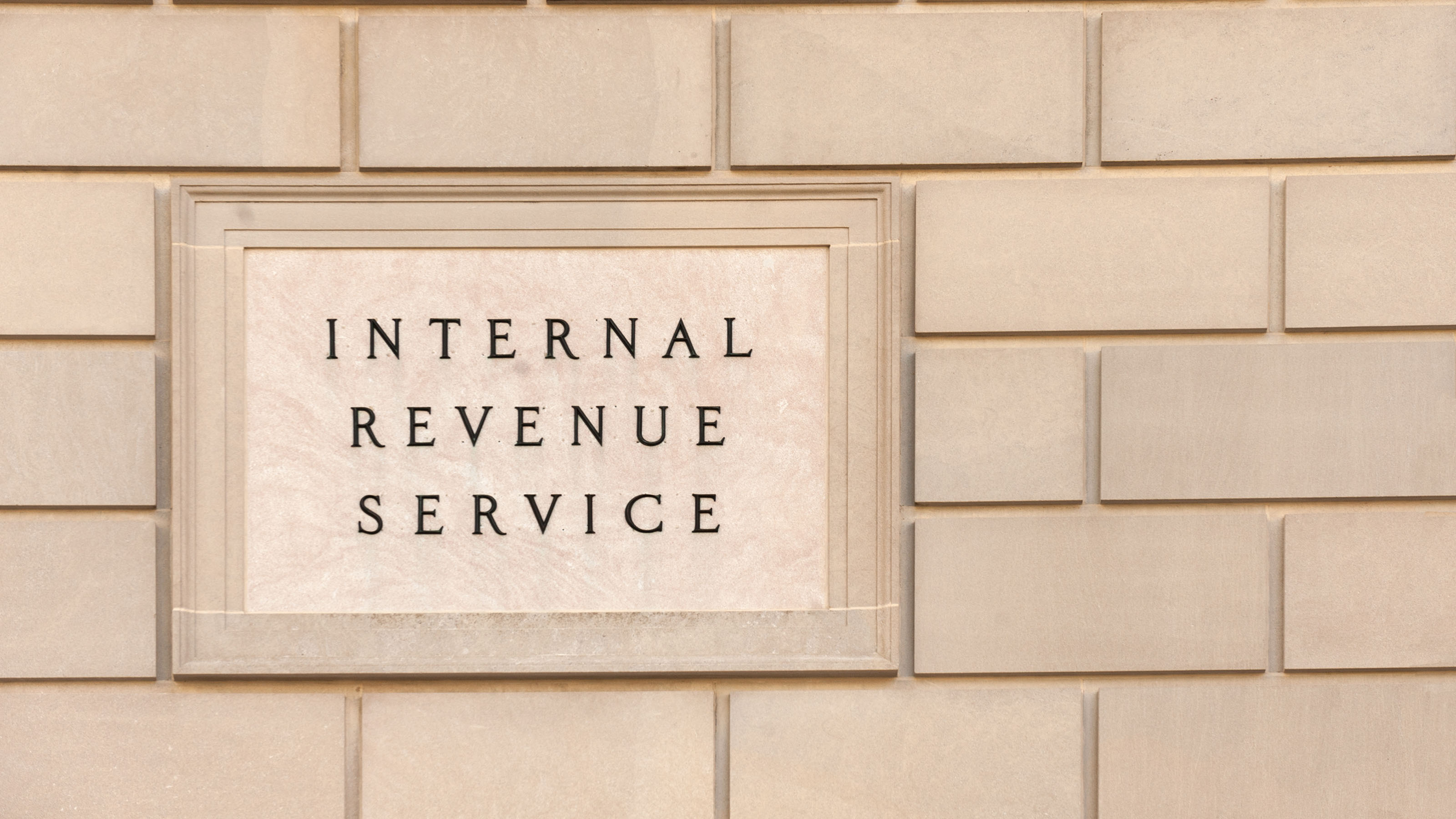Biggest Winners and Losers in Trump's New Tax Plan
Trump’s mega tax overhaul, known as the ‘One Big Beautiful Bill,’ has distinct winners and losers. Which group do you fall into?


The numbers are in, and experts are signaling the biggest winners and losers from the Trump administration’s new tax and spending package.
At the center of Trump’s megabill (sometimes called the "One Big Beautiful Bill" or OBBB) is the extension and temporary enhancement of tax cuts first implemented in the Tax Cuts and Jobs Act (TCJA) of 2017.
Signed into law on July 4, the GOP legislation is projected to add nearly $3.4 trillion to the national debt over the next 10 years.
From just $107.88 $24.99 for Kiplinger Personal Finance
Become a smarter, better informed investor. Subscribe from just $107.88 $24.99, plus get up to 4 Special Issues

Sign up for Kiplinger’s Free Newsletters
Profit and prosper with the best of expert advice on investing, taxes, retirement, personal finance and more - straight to your e-mail.
Profit and prosper with the best of expert advice - straight to your e-mail.
The measure also pays for new tax cuts, estimated to decrease federal revenues by $4.5 billion through 2034, through significant funding cuts to key programs, including Medicaid and food stamps.
Some of the changes in the new tax law may be beneficial for some households, while others are barred from accessing key tax breaks.
Here’s a breakdown of which taxpayers stand to benefit — and which could pay more — under Trump’s sweeping new tax plan for 2025 and beyond.
Trump’s new tax law: Biggest losers

Millions of households stand to lose access to crucial tax breaks and public benefits due to the Trump administration's new tax package.
Rural hospitals and clinics that rely on Medicaid
Rural hospitals and clinics, already underdogs, now face even harsher struggles under Trump’s new tax landscape.
As Kiplinger has reported, hundreds of rural hospitals across the U.S. are anticipating imminent closures and potential service reductions due to Trump’s steep Medicaid cuts.
The Trump administration’s ‘big beautiful bill’ slashes Medicaid spending by an estimated $1.02 trillion to offset tax cuts. That’s the largest federal rollback to Medicaid to date.
Historically, patients in rural hospitals and clinics rely on Medicaid or the Children’s Health Insurance Program (CHIP) to pay for services.
As a result of Medicaid cuts, over 300 rural hospitals face immediate closure. Some experts predict that nearly every state will be impacted, with most expected to see more than 25% of hospitals shut down. In 11 states, some 50% or more of hospitals are at risk of closing their doors.
For more information, see Is Your Local Hospital Closing Soon Due to Medicaid Cuts?
People earning under $53,000 a year
The lowest earners in the U.S. will see little benefit from Trump’s tax cuts and spending bill.
- A household earning up to $18,000 a year would lose an estimated $165 in after-tax dollars by 2027; that’s a 1.1% loss of income.
- By 2033, households in this income group would see a loss of up to $1,520 on average, according to the Penn Wharton Budget Model.
Meanwhile, folks earning up to $53,000 a year could lose $65 on average by 2033 under the newly enacted ‘big beautiful bill.’
Families that rely on food stamps
To help pay for major tax cuts in the ‘one big beautiful bill,’ the Trump administration enacted significant changes to the Supplemental Nutrition Assistance Program (SNAP). That program was previously/also known as “food stamps.”
Trumps’s tax legislation cuts SNAP funding by about 20%, or $186 billion over the next decade, putting millions of families at risk of losing food stamps.
The new provisions to the program are projected to cause 22.3 million families to lose some or all of their benefits, according to the Urban Institute.
On average, households are projected to lose $146 each month in SNAP support under Trump’s tax legislation. That’s a loss of $1,752 for a full-year recipient.
Undocumented people with children
If you are undocumented or currently on the pathway to citizenship, Trump’s new tax legislation will impact your access to tax breaks.
This includes access to SNAP benefits, tax breaks for marketplace health insurance like the Premium Tax Credit (PTC), and key family tax credits like the federal Child Tax Credit (CTC).
- As a snapshot, 4.5 million children, the majority of whom are U.S. citizens, would no longer be eligible for the CTC under the OBBB as new rules require a parent to have a Social Security Number (SSN).
- Other education tax breaks you won’t have access to unless you have a SSN include the American Opportunity Tax Credit (AOTC) and the Lifetime Learning Credit (LLC).
The new tax law also increases immigration fees and imposes new fees to take effect immediately.
For instance, a parole application now has a new fee of $1,000, and the temporary protected status (TPS) application fee increases from $50 to $500.
These are just some provisions that will impact undocumented individuals and households.
Student loan borrowers
The Trump administration is restructuring student loan borrowing as we know it. Under the new law, the Biden-era SAVE (Saving on a Valuable Education) plan is suspended.
This will impact 8 million borrowers enrolled in the program who rely on income-driven repayment programs as a path to loan forgiveness. Borrowers with loans in SAVE forbearance will see loans begin accruing interest on Aug. 1, 2025.
The OBBB eliminates the requirement that borrowers have a partial financial hardship to qualify for income-driven repayment (IBR) plans. Other changes include placing loan limits on part-time students, undergraduate, and parent borrowers.
The measure also reduces the number of repayment plans to just two programs.
For more information, see Trump Targets Student Loan Forgiveness: What it Means for Taxes and Repayment.
Biggest winners from Trump’s tax law

Trump's so-called 'One Big Beautiful Bill' has a number of distinct winners. Find out if you're included in this group.
Homeowners in high-tax states
One provision in Trump’s ‘one big beautiful bill’ could help homeowners in expensive states put thousands of dollars back into their pockets.
The bill temporarily raises the cap on the state and local tax (SALT) deduction from $10,000 to $40,000 annually for folks with incomes up to $500,000.
The SALT deduction allows taxpayers who itemize to subtract certain state and local taxes from their federal taxable income. This can help you reduce your property tax, income tax, and sales tax burden.
As an example, see our report on how Californians can benefit from the new SALT cap.
Households with incomes above $96,000
If you earn $96,000 per year, Trump’s new tax cuts and spending legislation will put more money into your pocket.
- Those who make $96,000 annually can expect to receive $3,955 in after-tax income in 2027.
- Households earning $179,000 per year are projected to get $6,690 in after-tax dollars by 2027.
- Anyone who earns $272,000 annually will receive $9,455 in after-tax income by 2027, and that figure continues to grow the more you make.
- Those in the top 0.1% can expect to get up to $301,550 in after-tax dollars by 2027.
According to the Penn Wharton Budget Model analysis, most of the gains for high-earners come from “a boost to corporate profits” from reinstating the TCJA's initial cost recovery system and upholding reduced tax rates for multinational corporations.
By 2030, some of those gains will be reduced as the SALT cap reverts to $10,000, impacting high earners.
Workers who rely on tips
Millions of workers across the country rely on tips to support their income, and the ‘big beautiful bill’ allows some of that hard-earned cash to go untaxed starting this year.
The new tax law incorporates a measure known as the ‘No Tax on Tips Act.’ The provision allows workers who receive tips to deduct up to $25,000 in reported cash tips from their taxed wages at the federal level.
The deduction phases out for those earning over $150,000 ($300,000 for joint filers) and is scheduled to expire after 2028.
Data show that about 4 million people in the United States, or one out of every forty workers, depend on tips to pay for food on the table. No tax on tips is a big win for hospitality, services, and gig workers for the time being.
For more information, see: No Tax on Tips Bill Approved: What it Means for You.
Older adults 65 and older
Another win tucked within the so-called ‘One Big Beautiful Bill’ is a bonus deduction for older adults.
The new $6,000 deduction will be available to individuals age 65 and older, with eligibility set at $75,000 in income for single filers and $150,000 for couples. The deduction phases out above those levels.
This provision is temporary and will be available from 2025 through 2028, so you won’t want to miss out. It will also supplement the existing extra standard deduction available to older adults.
What’s missing from Trump’s campaign promise? GOP lawmakers didn't end federal taxes on Social Security benefits as part of Trump’s megabill. Economists had long warned that eliminating taxes on SS benefits was riddled with problems.
Raising the standard deduction for older adults appears to be a middle-ground effort to make up for this failed promise.
For more information, see 2025 Tax Deduction Change for Those Over 65.
Families with children
If you have children or are planning on growing your family, Trump’s new tax law includes some major expansions to existing family tax breaks.
To start, the federal child tax credit increases from $2,000 to $2,000 per qualifying child on your 2025 tax return. If Congress had failed to expand the tax break, the maximum child tax credit would have reverted to $1,000 in 2026.
Additionally, the maximum refundable portion is $1,700 in 2025. That’s the amount you’ll be able to claim on the tax return you generally file in 2026. The bad news: Not everyone will be able to claim the child tax credit.
To claim the CTC, the child and the taxpayer (parent or guardian) must have a Social Security number.
The Child and Dependent Care Tax Credit (CDCT) is also permanently enhanced from 35% to 50% for qualifying expenses under the newly enacted OBBB.
Lastly, the measure enhances the federal adoption tax credit for the 2025 tax year by allowing parents to claim up to $5,000 in credits and making the tax break partially refundable. The credit is now worth up to $17,280 (up from $16,810 in 2024).
For more information, see our report: The Child Tax Credit 2025: How Much Is It?
More on the OBBB
- New GOP Car Loan Deduction: Which Cars and Buyers Qualify
- ‘Unprecedented’ Private School Voucher Tax Credit in Trump’s Megabill
- How Trump's Tax Bill Will Boost or Shrink Your Next Tax Refund
Profit and prosper with the best of Kiplinger's advice on investing, taxes, retirement, personal finance and much more. Delivered daily. Enter your email in the box and click Sign Me Up.

Gabriella Cruz-Martínez is a finance journalist with 8 years of experience covering consumer debt, economic policy, and tax.
Gabriella’s work has also appeared in Yahoo Finance, Money Magazine, The Hyde Park Herald, and the Journal Gazette & Times-Courier.
As a reporter and journalist, she enjoys writing stories that empower people from diverse backgrounds about their finances, no matter their stage in life.
-
 Vesting, Catch-Ups and Roths: The 401(k) Knowledge Quiz
Vesting, Catch-Ups and Roths: The 401(k) Knowledge QuizQuiz Test your understanding of key 401(k) concepts with our quick quiz.
-
 Why You Should Pay Attention to Company Guidance
Why You Should Pay Attention to Company GuidanceUnderstanding how corporate profit forecasts affect analysts’ estimates and stock ratings can help you make investment decisions.
-
 How to Protect Yourself and Others From a Troubled Adult Child
How to Protect Yourself and Others From a Troubled Adult ChildThis case of a violent adult son whose parents are in denial is an example of the extreme risks some parents face if they neglect essential safety precautions.
-
 Retirees in These 7 States Could Pay Less Property Taxes Next Year
Retirees in These 7 States Could Pay Less Property Taxes Next YearState Taxes Retirement property tax bills could be up to 65% cheaper for some older adults in 2026. Do you qualify?
-
 Estate Tax Quiz: Can You Pass the Test on the 40% Federal Rate?
Estate Tax Quiz: Can You Pass the Test on the 40% Federal Rate?Quiz How well do you know the new 2026 IRS rules for wealth transfer and the specific tax brackets that affect your heirs? Let's find out!
-
 'The 'Mamdani Effect' in New York: Can the City Afford a Millionaire Tax?
'The 'Mamdani Effect' in New York: Can the City Afford a Millionaire Tax?State Tax Will higher income taxes drive the wealthy to flee New York in 2026?
-
 Law Reversal Looming? Trump Eyes 2026 Gambling Winnings Tax Change
Law Reversal Looming? Trump Eyes 2026 Gambling Winnings Tax ChangeTax Deductions It's no secret that the IRS is coming after your gambling winnings in 2026. But how long will that last?
-
 Trump's Plan to Eliminate Income Tax: 7 Things to Know Now
Trump's Plan to Eliminate Income Tax: 7 Things to Know NowTax Policy The potential consequences of eliminating taxes in favor of Trump tariffs could impact everything from inflation to Social Security and might give some U.S. taxpayers pause.
-
 5 Types of Gifts the IRS Won’t Tax: Even If They’re Big
5 Types of Gifts the IRS Won’t Tax: Even If They’re BigGift Tax Several categories of gifts don’t count toward annual gift tax limits. Here's what you need to know.
-
 The 'Scrooge' Strategy: How to Turn Your Old Junk Into a Tax Deduction
The 'Scrooge' Strategy: How to Turn Your Old Junk Into a Tax DeductionTax Deductions We break down the IRS rules for non-cash charitable contributions. Plus, here's a handy checklist before you donate to charity this year.
-
 IRS Says You Made a Tax Return Mistake? A New Law Could Help You Fight Back
IRS Says You Made a Tax Return Mistake? A New Law Could Help You Fight BackTax Law Updated taxpayer protections change what the IRS must explain on error notices and how long you have to respond.